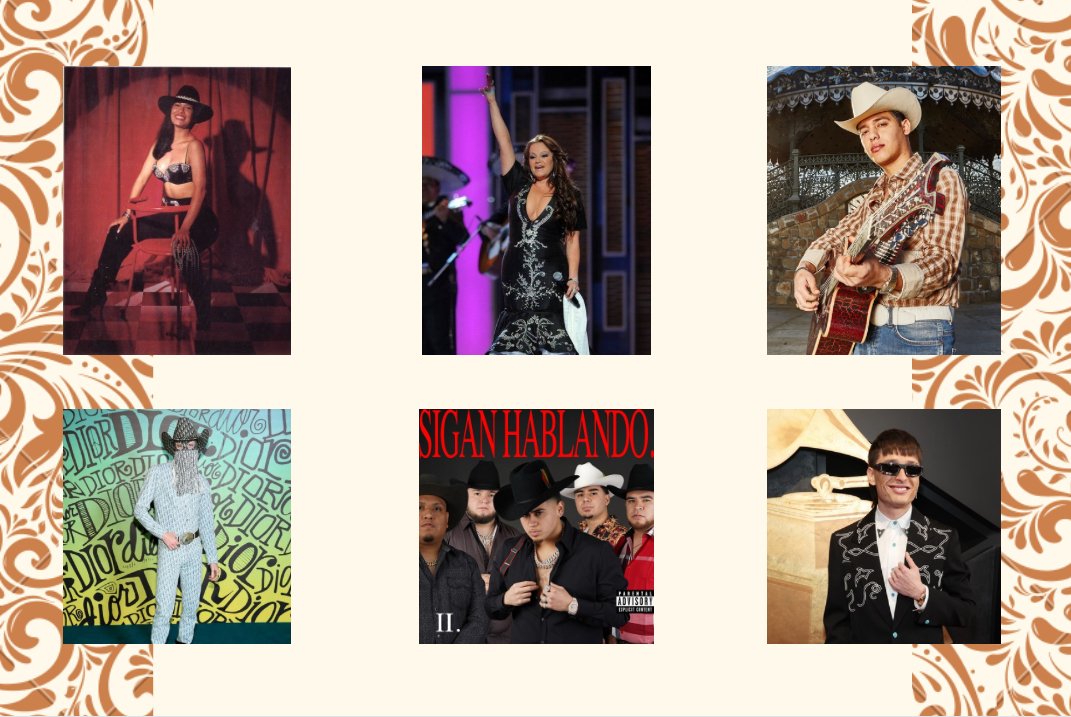Giddy Up! The Resurgence of Western Wear Is Finally Here
Graphics by Alexander Hernandez Gonzalez
This isn’t our first time at the fashion rodeo and it certainly is not Western wear’s last time coming back as a hot fashion trend. Recent pop culture and fashion moments have showcased the potential that Western attire can bring to the wardrobes of prospective consumers.
Western Barbie and Ken making an appearance on the 2023 film ‘Barbie,’ Pharrell Williams’ Louis Vuitton Men’s Fall-Winter 2024 collection and Beyoncé’s highly anticipated eighth studio album ‘Cowboy Carter’ have contributed to the popularity of the style.
Until recently, the fashion solely had support from people associated with Western lifestyles, usually with an American or Mexican background. Western wear has been here and it’s not going to saddle up anytime soon.
The category of clothing takes inspiration directly from Mexican vaqueros and charros. Vaqueros, typically single young men, were trained by Spaniards and eventually passed down the techniques to the next generation of vaqueros. Charros are Mexican horsemen from the countryside who are usually in intricate traditional dress.
During the 19th century, chaps, leg coverings, and lassoes were created. The intricate lasso work vaqueros and charros performed allowed for roping competitions to become a foundation of the rodeo and revamped American entertainment.
In the mid-1800s, these skills began to influence American ranchers. Northern Anglo settlers migrated to Texas and took ownership of Mexican ranches. Previous owners would teach African American cowboys the proper ranching skills and how to construct lassoes.
The American West was built by the Mexican vaquero and Buffalo Bill Cody brought them into the spotlight through his Wild West Shows. Alternatively, the film industry painted the white vaquero as a heroic cowboy and the Mexican vaqueros as villains.
Western wear was then influenced by American frontier clothing and the “Wild West” era. It wasn’t until singing cowboys, namely, John Wayne and Gene Autry, debuted in American media that Western garments became sought-after in the 1950s.
Cowboy hats, blue jeans, fringed garments, leather belts and cowboy boots were often associated with the singers and eventually, it became the custom for Western wear in the US.
For rancheros in Mexico, this style was not just a hot trend, it was a crucial part of their lifestyles. Musicians such as Joan Sebastian, Vicente Fernández and Chalino Sánchez were dressed in sombreros, botas and cinto piteados. Their presence allowed for Mexican Western wear to be shown and represent a prominent community in the country.
The fashion industry saddled up as they started to fill the runways with Western-inspired looks. Ralph Lauren’s Fall 1978 RTW collection, Mugler’s Spring 1992 RTW show and Gianni Versace’s Fall 1992 RTW presentation were the beginning of the Western wave.
Selena Quintanilla, Jenni Rivera and Ariel Camacho dominated the 90s, 2000s and early 2010s and were considered the new wave of Western-style music, both in the United States and Mexico. They used Western customs, looks and references to attract fans on a global level.
Now, it’s time for artists like Orville Peck, Fuerza Regida and Peso Pluma to keep riding the horse into the sunset. Western wear continues to impact the entertainment and fashion industry on a massive scale and it won’t be gone anytime soon.





